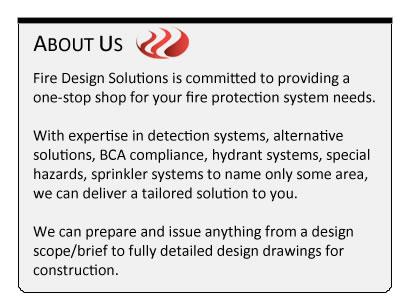Glowing Ashes of Promise: How Fire Protection Services Have Been Changing Neighborhoods
In a society where catastrophes can strike unannounced, fire protection services play a essential role in transforming communities into safer places. From living spaces to bustling business districts, the need for efficient fire prevention and response has never been more critical. With fire-related incidents causing turmoil and heartache, it is crucial to understand not only the dangers but also the tactics that can help mitigate them.

Fire safety is beyond a set of rules but a common responsibility. By training individuals and organizations about fire hazards and introducing robust fire safety measures, communities can cultivate an environment where protection becomes a habit. This article will explore various aspects of fire safety, equipping readers with the essential knowledge needed to defend homes, businesses, and, most importantly, lives. Through insights into best practices, regulations, and advanced technologies, we aim to spark a culture of preparedness and resilience against fire risks.
Essential Fire Safety Tips
One of the basic aspects of fire safety is understanding and mitigating usual fire hazards in your house and establishment. Areas such as the kitchen, where cooking is done, often present major risks. Make it a practice to keep flammable materials clear of heat sources and ensure that cooking appliances are watched at all times. Additionally, be cautious of electrical overloading; check your outlets and power strips to avoid overuse. Regular inspections and maintenance can help identify potential hazards before they escalate into critical problems.
Creating a fire escape plan is crucial for the well-being of your family or workplace. This plan should map out the quickest routes out of the building, assign a meeting point outside, and include provisions for individuals with limited mobility. Conducting regular fire drills will ensure that everyone is familiar with these procedures, increasing the chances of a safe evacuation in an emergency. It is not only about having a plan on paper; practice is critical so that everyone knows exactly what to do when the alarm sounds.
Proper maintenance of fire safety equipment, such as smoke alarms and fire extinguishers, cannot be overstated. Smoke alarms should be verified monthly and their batteries replaced at least once a year. This easy task can save lives by ensuring that alarms work properly when needed most. Similarly, knowing how to select, use, and maintain fire extinguishers is important. Check the pressure gauge regularly, and ensure that extinguishers are within reach and suitable for the types of fires that may occur in your environment.
Establishing Impactful Fire Safety Plans
An impactful fire safety plan is vital for both residences and businesses. It starts with a thorough assessment of potential fire hazards, which entails identifying the availability of flammable materials, potential ignition sources, and the layout of the building. Fire Consulting Engineers with local fire safety services can provide valuable insights into frequent risks and how to mitigate them. By documenting these hazards, individuals and organizations can take targeted actions to diminish their susceptibility to fire incidents.
Once potential hazards are identified, the subsequent step is to formulate a concise fire escape plan. This plan should include designated escape routes, emergency exits, and locations of fire extinguishers and alarm systems. It's crucial that all family members or employees are familiar with the plan and that regular fire drills are conducted to ensure preparedness in the event of an emergency. The significance of conducting these drills cannot be overstated, as they help strengthen the response needed during a fire.
Finally, maintaining fire safety equipment is essential for its efficacy. Fire extinguishers should be examined periodically, and smoke alarms should be tested monthly to ensure they are operational. Additionally, individuals should stay knowledgeable about the latest innovations in fire protection technology, as these innovations can greatly enhance safety measures. By committing to routine maintenance and ongoing education on fire safety, communities can build a culture of preparedness that ultimately preserves lives and property.
The Role of Technology in Fire Safety
In recent years, the use of innovations into fire safety measures has transformed how localities approach fire prevention and response. Innovations such as connected fire alarms equipped with Internet of Things features provide real-time alerts to property owners and commercial properties, significantly enhancing emergency response in crises. These devices can also connect to cell phones, ensuring that even when residents are not present, they receive important alerts about potential fire risks. This development emphasizes the necessity of being ready and educated, whether at the household or in the business environment.
In addition, fire extinguishing systems have progressed with current advancements to include self-responding mechanisms that can recognize fires more quickly and deploy required actions without manual oversight. Systems that incorporate detection technology and AI can analyze signals for signs of a fire or extreme temperatures, allowing for preventative actions. This capability not only minimizes the risk of damage caused by fire incidents but also plays a key part in preserving lives, highlighting the importance of grasping fire suppression systems and their advantages.
In conclusion, preparation and awareness have also benefited from technological advancements. Interactive simulations and augmented reality scenarios provide workers with real-world practice to grasp fire response techniques better. These tools offer immersive training that is more impactful in equipping personnel for genuine scenarios. As localities continue to integrate these innovative solutions, the change of fire safety services becomes increasingly clear, highlighting the importance for ongoing adaptation to these advancements in the field.